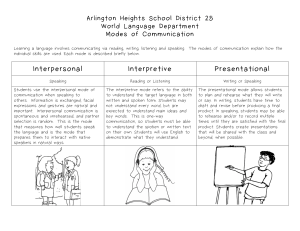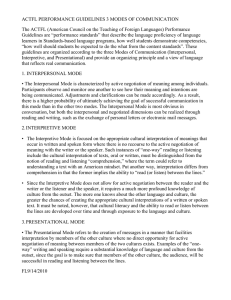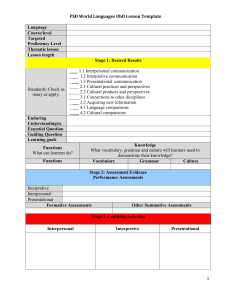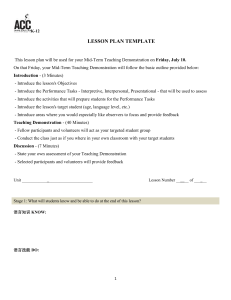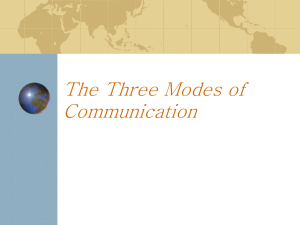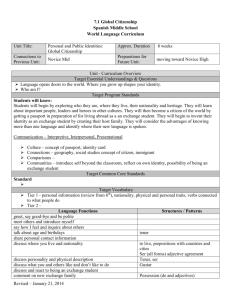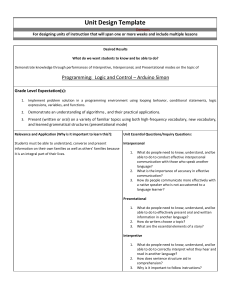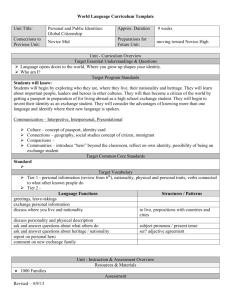Communication Quiz: Language Education Standards
advertisement
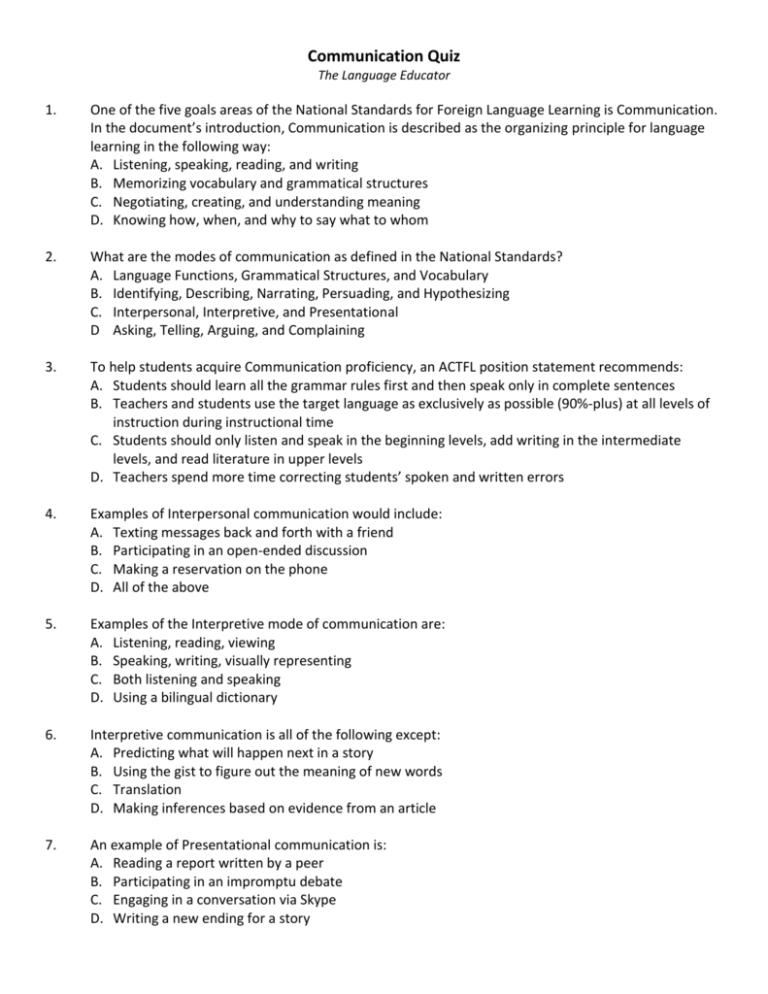
Communication Quiz The Language Educator 1. One of the five goals areas of the National Standards for Foreign Language Learning is Communication. In the document’s introduction, Communication is described as the organizing principle for language learning in the following way: A. Listening, speaking, reading, and writing B. Memorizing vocabulary and grammatical structures C. Negotiating, creating, and understanding meaning D. Knowing how, when, and why to say what to whom 2. What are the modes of communication as defined in the National Standards? A. Language Functions, Grammatical Structures, and Vocabulary B. Identifying, Describing, Narrating, Persuading, and Hypothesizing C. Interpersonal, Interpretive, and Presentational D Asking, Telling, Arguing, and Complaining 3. To help students acquire Communication proficiency, an ACTFL position statement recommends: A. Students should learn all the grammar rules first and then speak only in complete sentences B. Teachers and students use the target language as exclusively as possible (90%-plus) at all levels of instruction during instructional time C. Students should only listen and speak in the beginning levels, add writing in the intermediate levels, and read literature in upper levels D. Teachers spend more time correcting students’ spoken and written errors 4. Examples of Interpersonal communication would include: A. Texting messages back and forth with a friend B. Participating in an open-ended discussion C. Making a reservation on the phone D. All of the above 5. Examples of the Interpretive mode of communication are: A. Listening, reading, viewing B. Speaking, writing, visually representing C. Both listening and speaking D. Using a bilingual dictionary 6. Interpretive communication is all of the following except: A. Predicting what will happen next in a story B. Using the gist to figure out the meaning of new words C. Translation D. Making inferences based on evidence from an article 7. An example of Presentational communication is: A. Reading a report written by a peer B. Participating in an impromptu debate C. Engaging in a conversation via Skype D. Writing a new ending for a story Communication Quiz The Language Educator 8. Students have communicated well if: A. Their errors do not interfere with comprehension of the listener, reader, or viewer B. They paraphrase when they can’t think of the exact word C. They ask their partners to rephrase when they don’t understand D. All of the above 9. Teaching communicative language functions will develop students’ proficiency. An example of a communicative language function is: A. Use of the past tense B. Compare and contrast C. Use of an electronic/online translator D. Translating full sentences 10. An effective model for assessing the modes of communication is: A. Having students memorize dialogues B. Using fill-in-the-blank worksheets C. Integrated Performance Assessment D. Spelling quizzes Please record your answers here, making notes about any questions or discussion. 1) _____ 2) _____ 3) _____ 4) _____ 5) _____ 6) _____ 7) _____ 8) _____ 9) _____ 10) _____
